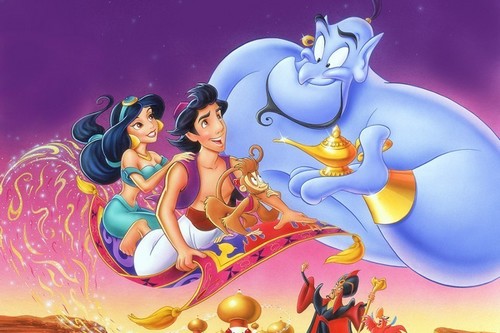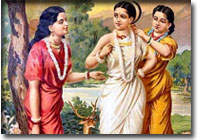Assignment:
For your midterm essay, write a paper of at least 1500 words (up to 1700) that focuses on ONE of the texts we have read in the course so far, makes an argument about the text, and supports that argument. Your argument should be your answer to a larger thematic question (see possible questions from oral midterm exam, these potential paper topics, which are based on the questions from the oral midterm, or these prompts on Sakuntala/Medea). In other words, you are a tour guide through the text, making your argument about the text, telling us how to read it and why we should read it that way by giving evidence and interpreting it (telling us why the word, images, structures make us read it in a specific way). This means you should avoid just summarizing the plot: I have read these texts already–I want YOU to tell me HOW I should read them!
While this paper should focus on one text, you should also compare different VOICES in the text (if you are making an argument about Medea, you should compare her perspective to that of Creon’s, the nurse’s, Jason’s, etc, in order to make your point). Additionally, in your second to last paragraph, you should briefly bring in one of the other texts from the class and discuss how this 2nd text’s take on your topic illuminates something about the values of the culture in the text you have focused on for your paper (for example, when discussing duty in the BG, you might bring in Medea’s ideas of what is owed to the family and to oaths to highlight a different perspective on duty as well as what the BG’s conception of duty says about the culture/society it comes out of. Or, you might compare the BG’s conception of duty to Sakuntala’s–for both, duty is defined as dharma, but the two texts present dharma in different ways).
You may want to focus on expanding an argument or exploring a question that you addressed in one of your short papers.
Short paper no. 4 is your draft of this paper. See specific prompt for it at the bottom of this post.
Breakdown of what to include:
Your paper must have a clearly stated thesis in the first paragraph and you must develop your argument in a logical, persuasive manner throughout the rest of the essay, support your points with textual evidence, and conclude with a paragraph that summarizes your findings. Thus, your paper should contain the following elements: argument, evidence, interpretation of evidence. It should have the follow elements: introduction, body paragraphs, conclusion. I have attached a further explanation of what I mean by these things, and I have attached a template you can use to fill in the blanks and create an argument.
- Introduction (last sentence or two: your argument)
- Body paragraphs (topic sentence + evidence + interpretation of evidence)
- Conclusion (restate points + so what)
Structure:
Here are two possible structures for your paper. Both are valid; it depends on your style:
1)Argument-driven: In your introduction paragraph, introduce a research question you seek to answer and give your answer (thesis statement) at the end of the paragraph. Use your body paragraphs to prove that thesis statement.
2) Inquiry-driven: In your introduction, introduce a research question you seek to answer; use your body paragraphs to explore this question; come to a conclusion/answer (thesis statement) in your conclusion paragraph.
Format:
- At least 1500 words (no less: you will lose points if your paper is any shorter). Provide a word count: Do not hand in handwritten assignments to me; stapled/paper clipped
- Title and Page numbers
- Bibliography and citations in MLA format
- Times 12 point font
- 1-inch margins
- Double spaced; No extra spaces after paragraphs
- Fully edited: free of typographical, spelling, punctuation, and grammatical errors
- Formal language: avoid “you,” “well,” and other slang words.
Resources:
Fill in the blanks to make an argument
More argument templates with examples
Notes on argument, evidence, interpretation
***
Draft for analytical paper, focusing on structure (short paper number 4):
In our short papers so far, we’ve asked questions, tried to pose answers to these questions (as arguments), and tried to use textual evidence to support/build on those arguments (evidence and interpretation). The last thing I want you to focus on before your oral midterm and analytical paper is structure, which is one of the most useful interpretive tools, but also often difficult to see if you are not used to reading for it. This can mean simple repetition, but it can also mean direct parallels being drawn (through repeated images, colors, comparisons, speech, and linguistic echoes). If a parallel is drawn we need to pay attention.
Parallels are not always positive; they may be highlighting differences (or, the difference may be calling our attention to a change in character, or a change in the intensity of the situation). For example, Sakuntala features the king spying on another character in a garden in Act I and Act VII, but the scene in Act VII has a much different tone and resonance. To do more than point out parallels, you need to think about where the passages occur. As parallels build up, they play a part in making sense of the narrative and how we are supposed to interpret it. For example, Gilgamesh and Enkidu are both described at different points as being shaggy and wild, but it means something different, and has different weight, when we see Gilgamesh described this way after Enkidu’s death. You can consider: has the meaning of an image (or whatever the parallel is) changed based on context?
Please write a response paper of 1-2 pages on the text you want to work with/write about in your analytical paper, in which you make an argument about how the text is structured (in other words, what looking at the structure allows you to see about the text’s meaning), how it deploys parallels, and to what end. Alternately, make the argument you want to make in your analytical paper, and use what you’re saying about structure to help you build/support it. Be sure to make an argument and use textual evidence (this means quote the text) to support it, again showing me your annotations









